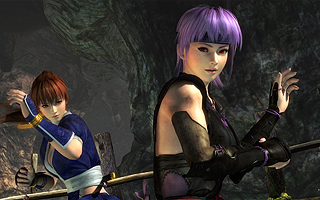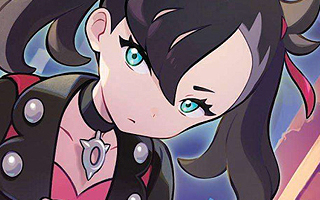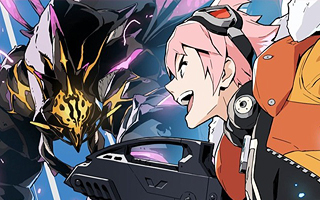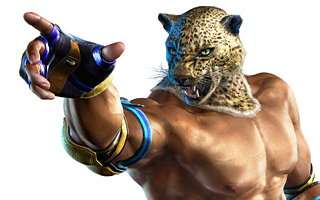Blast from the Past
Top 10 Best Nostalgia Levels of All Time!
We’ve already taken a look at gaming’s best remakes, but this list examines specific levels or areas that reference a previous game in a series. In some cases, players are given an opportunity to revisit familiar locations and see how they’ve been altered over time. In other cases, the areas are virtually unchanged. It’s common practice for nostalgia levels to use the same music as the originals, and they’ll sometimes even use the same graphics. Thomas Wolfe said you can’t go home again, but this list challenges that notion. It’s relatively common for maps to be reused in first-person shooters or tracks to be recycled in racing games, so I’m going to focus mostly on single-player experiences for this list.
10
Parking Garage
Driver: San Francisco

Tutorials often feel unnecessary, and it’s annoying when games hold your hand instead of letting you figure things out for yourself. In most cases, tutorials are only there to make sure the player understands the basic play mechanics. In Driver, the tutorial is arguably the toughest mission in the game since it forces players to develop skills they may never use again. This tutorial placed players in a parking garage with a checklist of driving maneuvers they had to perform before they could proceed. The game didn’t say how to perform these maneuvers, however, so many people never made it out of the garage. It’s not a beloved stage by any stretch of the imagination, so the prospect of returning to it might not sound very exciting. (It’s not like a parking garage is an especially interesting environment in the first place.) That being said, the “Blast from the Past” Easter Egg in Driver: San Francisco is too cool to ignore. If you got your hands on a DeLorean and managed to accelerate to 88 mph, you would be given an opportunity to re-visit the most notorious tutorial in gaming history. Great Scott!
9
Passage from Genesis
Ecco the Dolphin: Defender of the Future

Ecco the Dolphin: Defender of the Future is one of those games that you either love or hate. Its 16-bit predecessors could be pretty ambiguous at times, but the 3D environments in the Dreamcast sequel made things even harder to follow. It was easy to get lost in the vast desolate oceans, and your objectives were not always clear. The game had a couple of stages that were directly inspired by its 2D predecessors, however. While the camera would typically follow behind the player during the game, these hidden stages were played from a side view just like the original Genesis titles. This wasn’t exactly a subtle reference, and one of the areas was even called “Passage from Genesis” just to make sure everyone knew where the developers were coming from. I was never the biggest fan of the series, but the retro stages in Defender of the Future felt like a breath of fresh air. They basically played out like a remastered game before remastered games were cool.
8
The Echo Chamber
Dragon Quest XI

In Dragon Quest XI, the Tockles are elusive beings that watch over the space-time continuum and preserve the tales of past heroes. Their records are preserved in magical tomes within the Echo Chamber, which can be found in the hidden town of Tickington. When monsters begin to terrorize the tomes, the Tockles recruit the help of the Luminary to help repair history. In essence, the Echo Chamber allows players to visit the worlds of the first ten Dragon Quest games. You’ll visit familiar locations and meet characters from past Dragon Quest games, and you’ll be presented with dozens of side quests that are based on past adventures. The Echo Chamber was exclusive to Nintendo platforms, and the Switch version felt especially nostalgic since the town of Tickington could only be accessed in the game’s 2D mode. Dragon Quest XI has a fantastic cast of characters, but it’s nice to be able to visit Bianca from Dragon Quest V or check in with Jessica from Dragon Quest VIII. There was even a realm based on Dragon Quest X, which marked the first time that its characters and locations were localized for the west. The Echo Chamber exists outside of the normal flow of time, so you don’t need to visit it in order to complete the main adventure. Personally, I couldn’t pass up an opportunity to relive some of my favorite Dragon Quest moments.
7
The Mushroom Kingdom
Super Mario Odyssey

Nostalgia levels are pretty common in the Mario series, but my favorite example is the Mushroom Kingdom from Super Mario Odyssey. This area is overflowing with references to Super Mario 64. You can visit an updated version of Peach’s castle, you can access hidden levels by jumping into paintings, and Yoshi can still be found on the castle’s roof. The kingdom’s power moons are also replaced with power stars, and a familiar Super Mario 64 jingle will even play when you find one! The kingdom also gives players an opportunity to purchase a new outfit that makes Mario look like his Nintendo 64 counterpart. By wearing this costume, players can access a low-poly courtyard that looks like it was lifted straight out of Super Mario 64. The entire Mushroom Kingdom felt like a love letter to fans of Super Mario 64, and it made we wish for a proper remaster. Nobody does nostalgia quite like Nintendo.
6
Green Hill Zone
Sonic Mania

It’s fair to say that Sonic’s transition from 2D to 3D wasn’t as smooth as it could have been. Sega was late to the party, and some questioned if they should have been invited in the first place. While there have been a few legitimately good 3D Sonic games, most of them have been middling or outright terrible. 2010’s Sonic the Hedgehog 4 was a huge disappointment too, and many were left wondering if Sonic would ever see a return to glory. Sonic Mania took the series back to its roots and reminded us why it was popular in the first place. Sonic Mania is filled with references to past Sonic games. My favorite moment in the entire game involved an impromptu journey into Dr. Robotnik’s Mean Bean Machine, but I think Green Hill Zone, Act 1 played a more important role in setting the overall tone of the game. The opening stage takes players back to the first level of the first Sonic game. For fans of the series, this stage is just as iconic as 1-1 from Super Mario Bros.. Green Hill Zone looks exactly like you remembered it at first, but you’ll start to notice anomalies as you progress through the stage (including corkscrew bridges that weren’t present in the original). Sonic Mania is exactly like the old Sonic games, but it’s something entirely new at the same time. In that sense, Green Hill Zone, Act 1 sets the stage for the entire game.
5
Black and White Plains
Kirby’s Adventure

Kirby’s Dream Land was an enjoyable Game Boy title, but it was a little light on content. The series didn’t have much of an identity until Kirby’s Adventure was released the following year. The NES follow-up marked the first time Kirby’s now-iconic copy abilities were used. (It was also the game that established that Kirby was actually pink, and not white.) The colorful environments in Kirby’s Adventure were much more lively than the black-and-white backdrops that defined its predecessor. Although I appreciated the forward momentum that the series had, my favorite stage in Kirby’s Adventure played tribute to the series’ roots. The penultimate level in the game featured grayscale graphics in line with what would have been seen on the Game Boy. The stage itself directly referenced numerous areas from Kirby’s Dream Land, and it even featured the same background music! Kirby himself was the only thing that retained his color, and this helped highlight his evolution.
4
Sarien Desert
Space Quest IV

Space Quest IV breaks the fourth wall with a unique time-travel gimmick that allows players to visit Space Quest games from both past and future. The future sections allowed you to explore a number of parody games that were never actually planned for release, but great care was taken to recreate the past. One memorable scene saw Roger Wilco traveling back to the desert from the original Space Quest. The backgrounds in this section replicated the blocky, 16-color EGA graphics of the original game, but Roger and his time machine were rendered in all their VGA glory. Upon entering a nearby bar, Roger is accosted by a group of monochromatic bikers who consider his 256 colors to be pretentious. “Mr. ‘Look at Me, I’m in VGA'” is promptly kicked out of the bar, but this encounter was one of the most memorable parts of an already memorable game. What better way to highlight the technological advancements of the series than by introducing characters who are jealous of said advancements?
3
Kanto Region
Pokémon Gold & Silver

The first generation of Pokémon took place in the Kanto region. This area – which featured many cities and diverse geography – was based on the real-world Kantō region in Japan. The next generation of Pokémon was set in the neighboring Johto region and featured brand new cities and locations. Sequels are expected to feature new worlds to explore, but Pokémon Gold and Silver did something that no one was expecting after the credits rolled. Upon completing the game, players are given the opportunity to travel from Johto to a scaled-down version of the Kanto region from the first Pokémon games. Players could challenge the Gym Leaders from the previous game, and it was fascinating to learn how much the region had changed in the three years following the events of Red and Blue. It almost felt like you were revisiting the town you grew up in. The surprise journey to Kanto ranks right up there with Zelda‘s second quest and the upside-down castle from Symphony of the Night as one of gaming’s greatest post-game surprises.
2
Hyrule Overworld
The Legend of Zelda: A Link Between Worlds

While there are a handful of games in the Zelda series that could be considered direct sequels to earlier games, it’s customary for each game to feature an entirely new world to explore. A Link Between Worlds broke this convention by using the same overworld layout that A Link to the Past used some 21 years earlier. Although the game was set many generations after the events of A Link to the Past, there were many familiar landmarks to explore around Hyrule. The dungeons were all brand new, but Hyrule Castle, Kakariko Village, the Lost Woods, Death Mountain, and Link’s house were all exactly where you remembered them being. It was fun to revisit the past and see how things had changed over time, and Link’s newfound ability to merge into walls allowed players to see the familiar locales through a different lens. Everything old was new again. The music made things even more nostalgic, and it was nice to hear arranged versions of some of gaming’s greatest tracks.
1
Planet Zebes
Super Metroid

After a brief visit to the Metroid home world in Metroid II, Samus Aran returned to planet Zebes in her third outing. Samus had familiarized herself with the space pirate stronghold during her first adventure, and she destroyed Mother Brain in the process. Within the first few minutes of Super Metroid, players find themselves in familiar territory as Samus passes through the very corridors where she battled Mother Brain years earlier. You essentially get to explore the same areas that were featured in the first Metroid, but you approach them from a different angle. You pass through the shattered remains of Mother Brain’s glass casing, power-ups and energy tanks are hidden in the same locations, and you’ll descend down through the same shaft that Samus made her escape through at the end of her first adventure. Interestingly, the game leaves the nostalgia in the background for the most part. There’s no exposition to remind players of where they are, and you might not even realize that you’re taking a trip through memory lane. I didn’t fully appreciate the subtleties until I went back and played the original Metroid after finishing its Super follow-up.





Do you agree with this list? Let us know what you think by leaving a comment below. Your opinion matters!